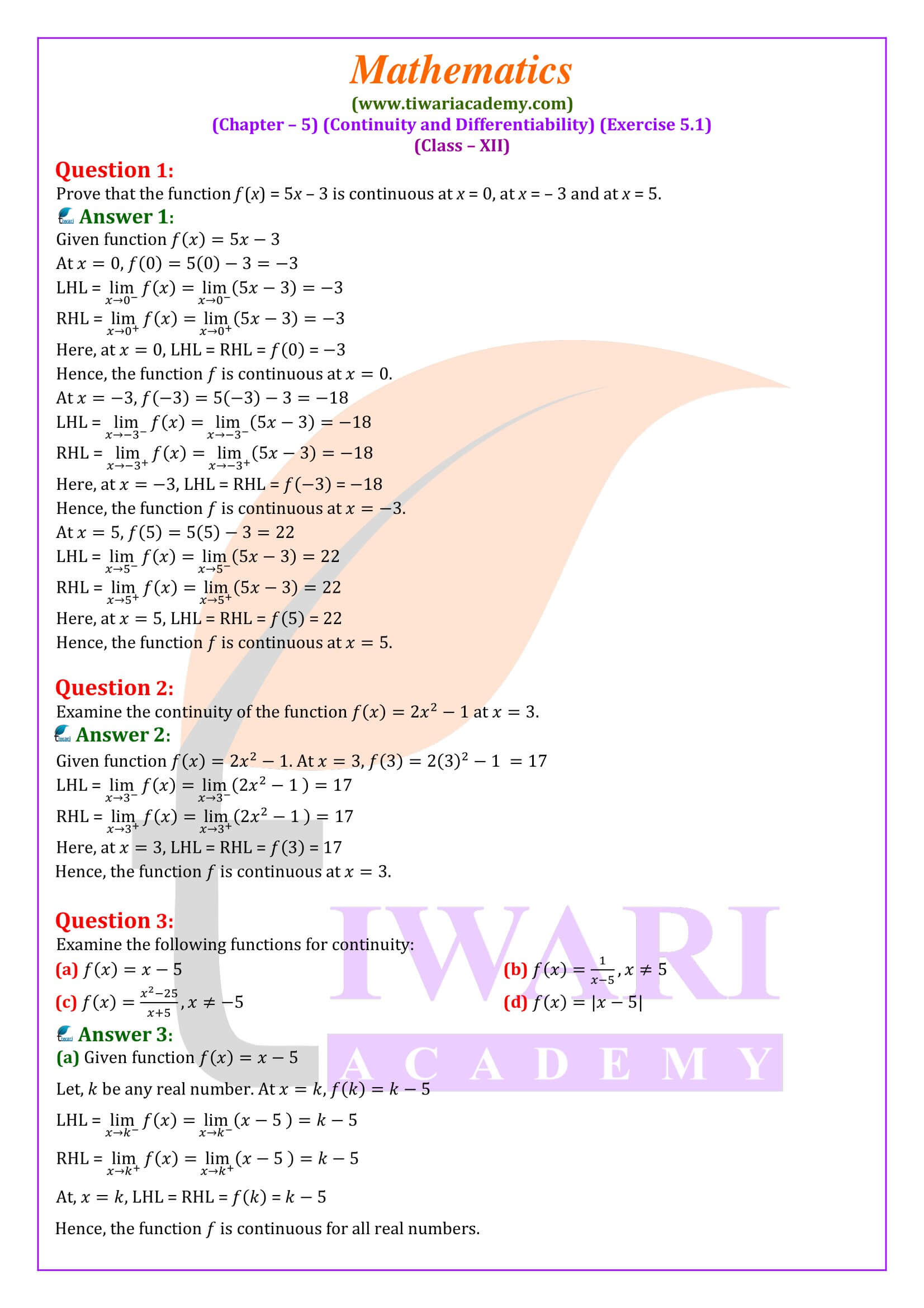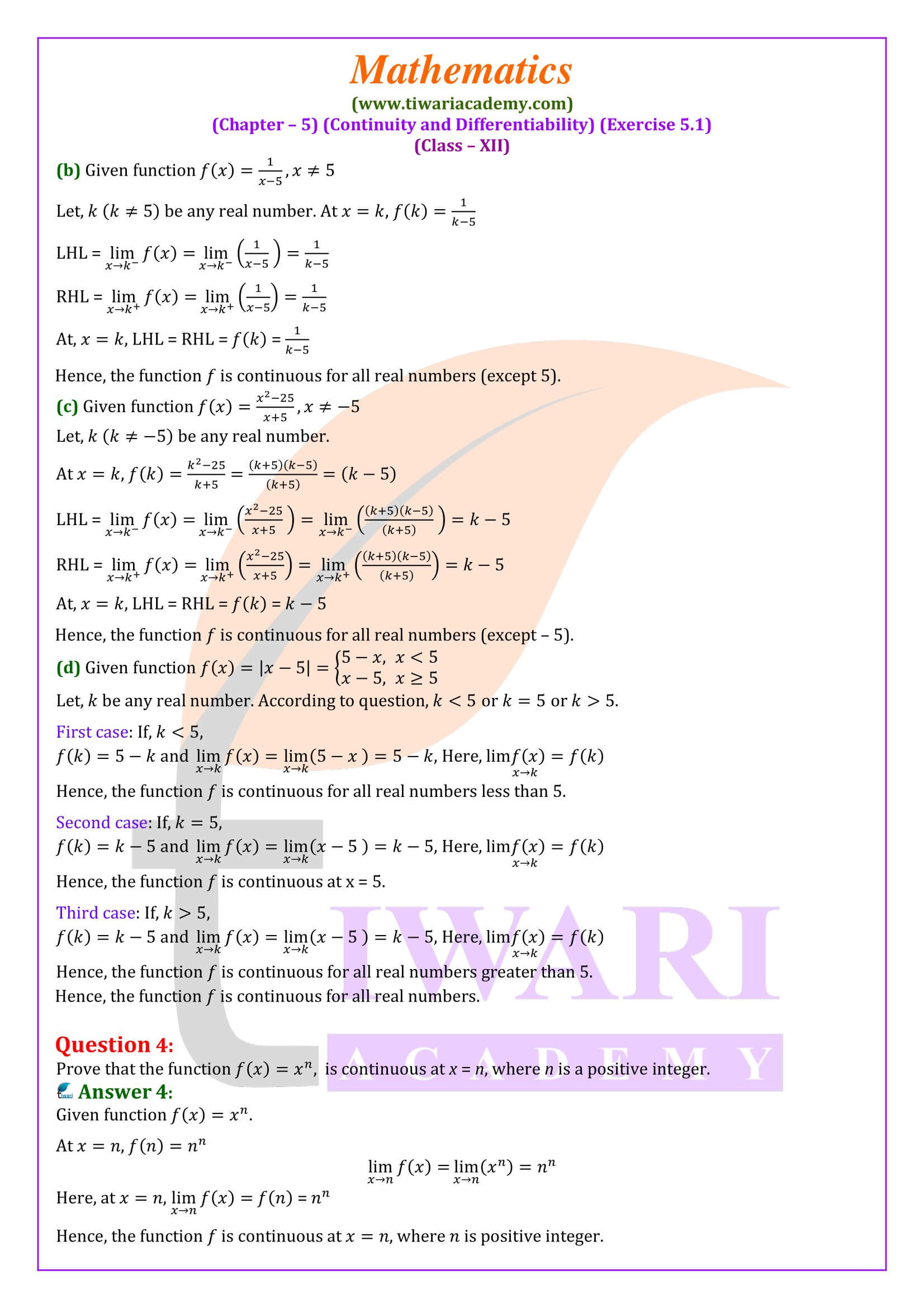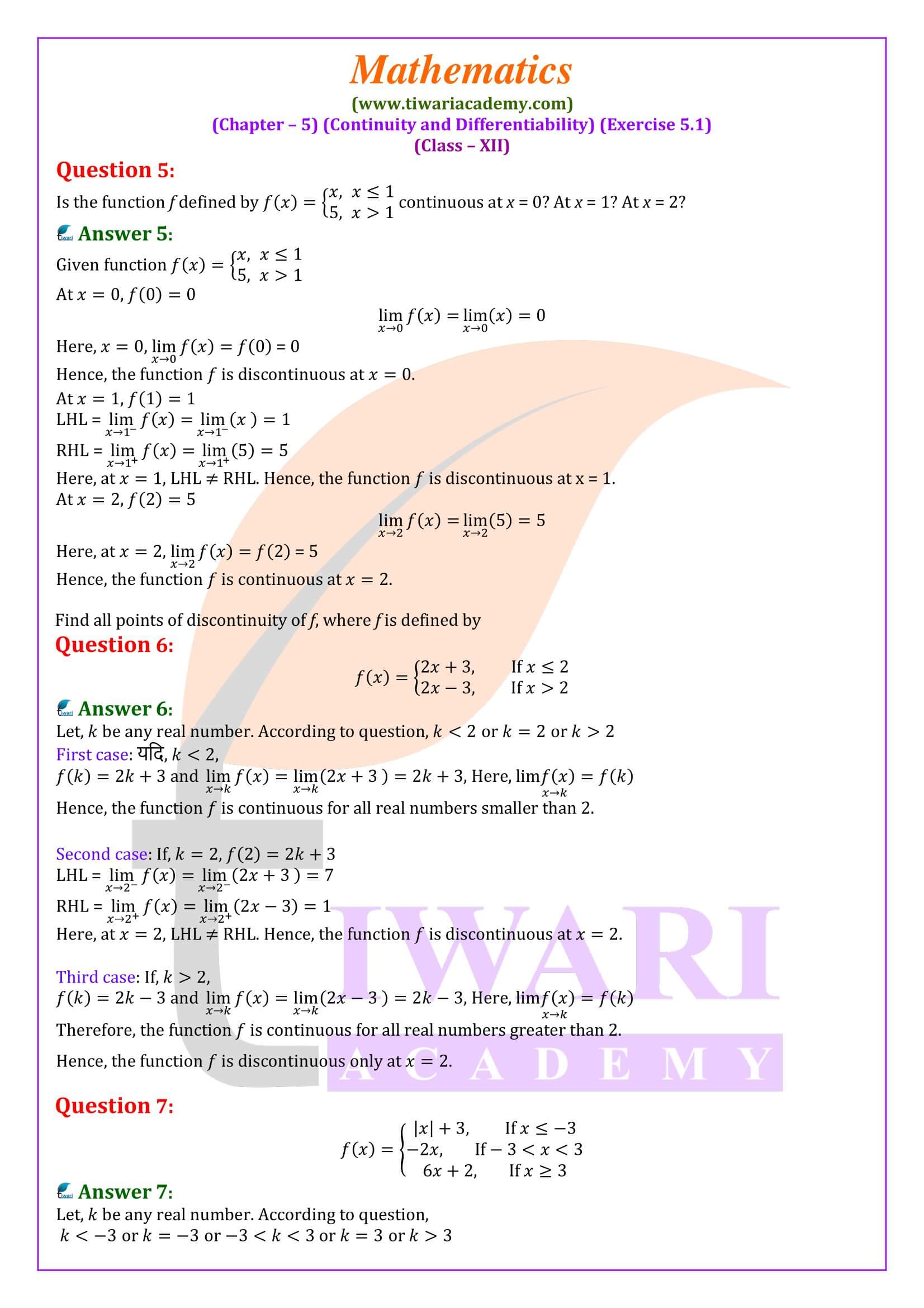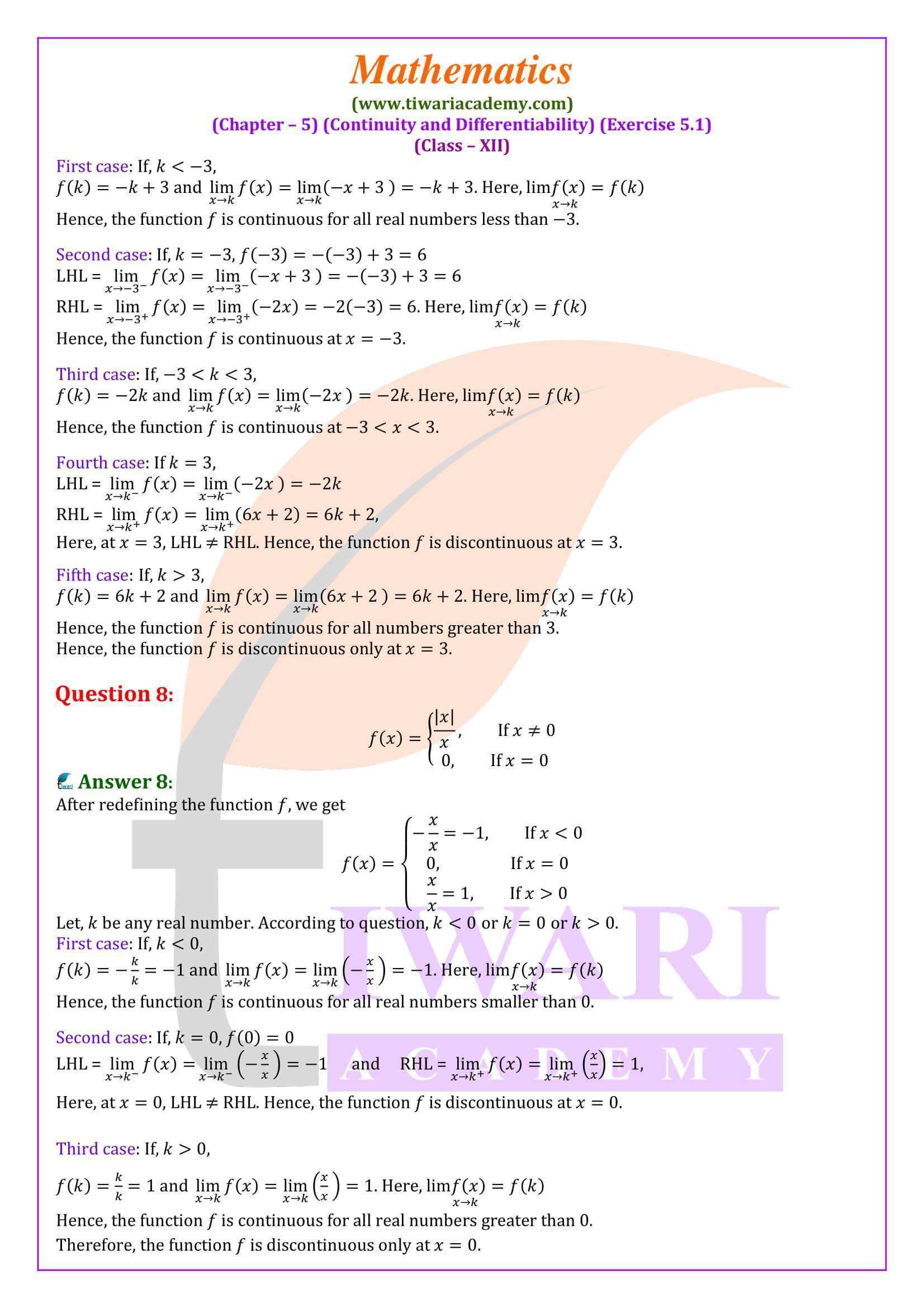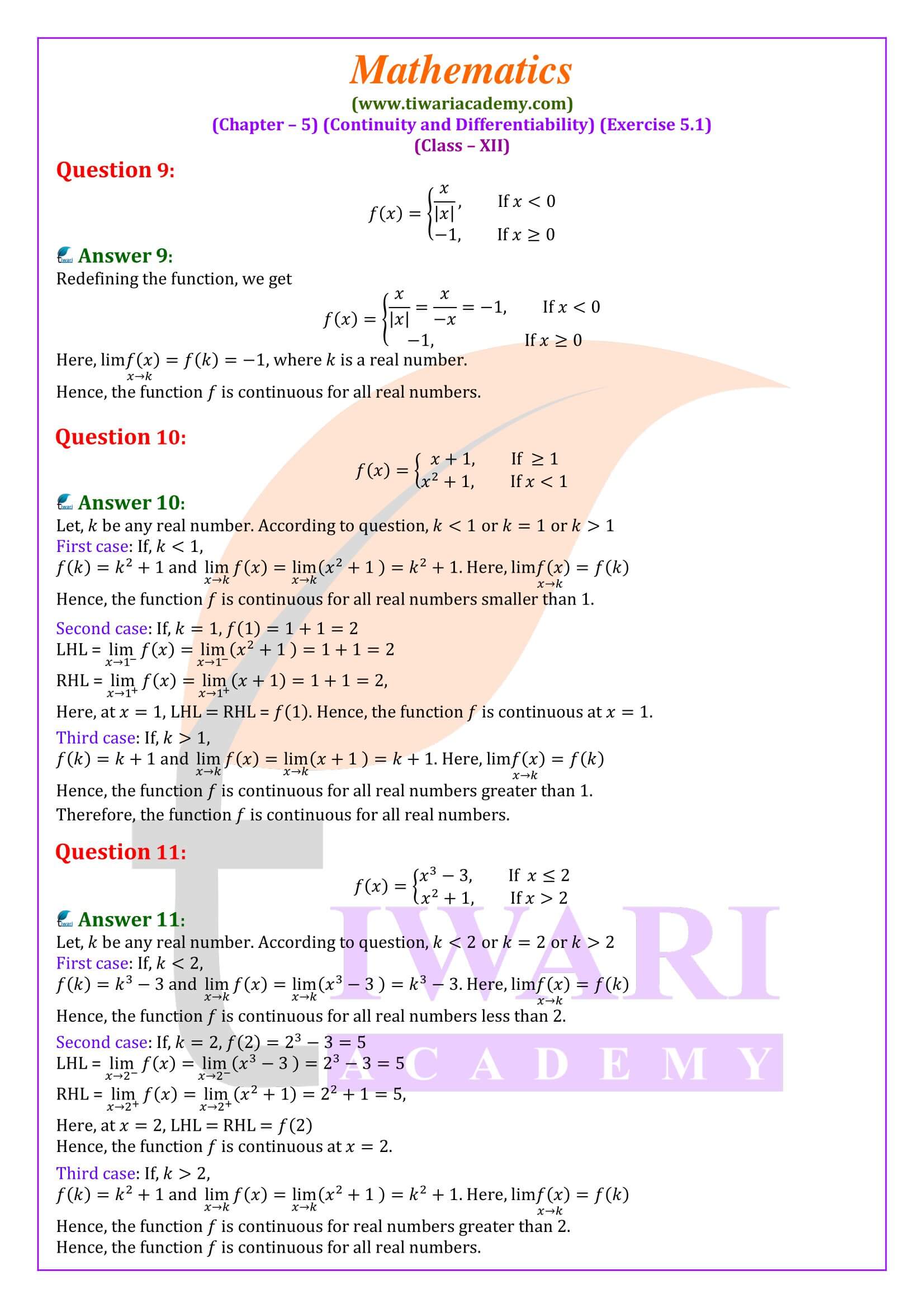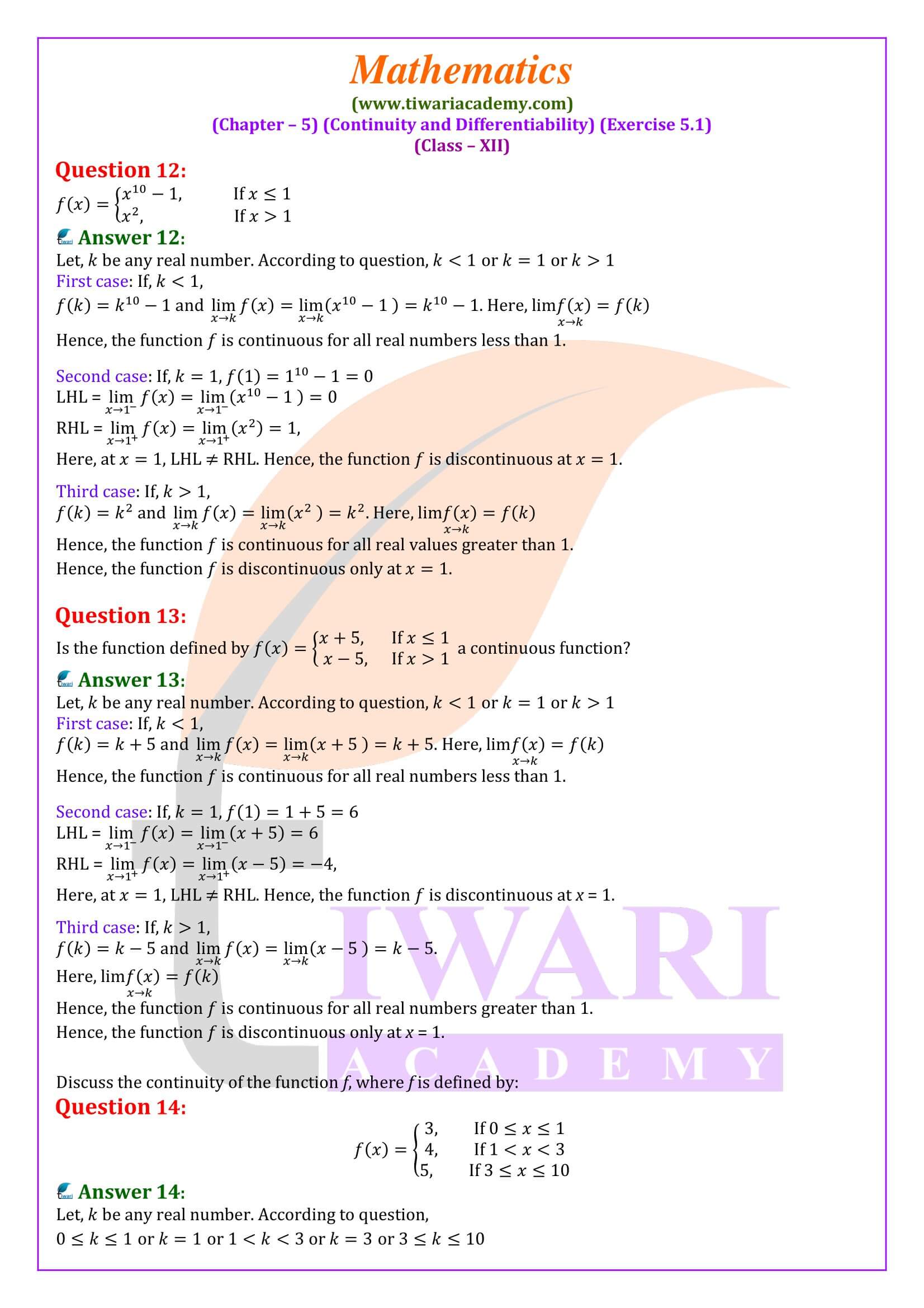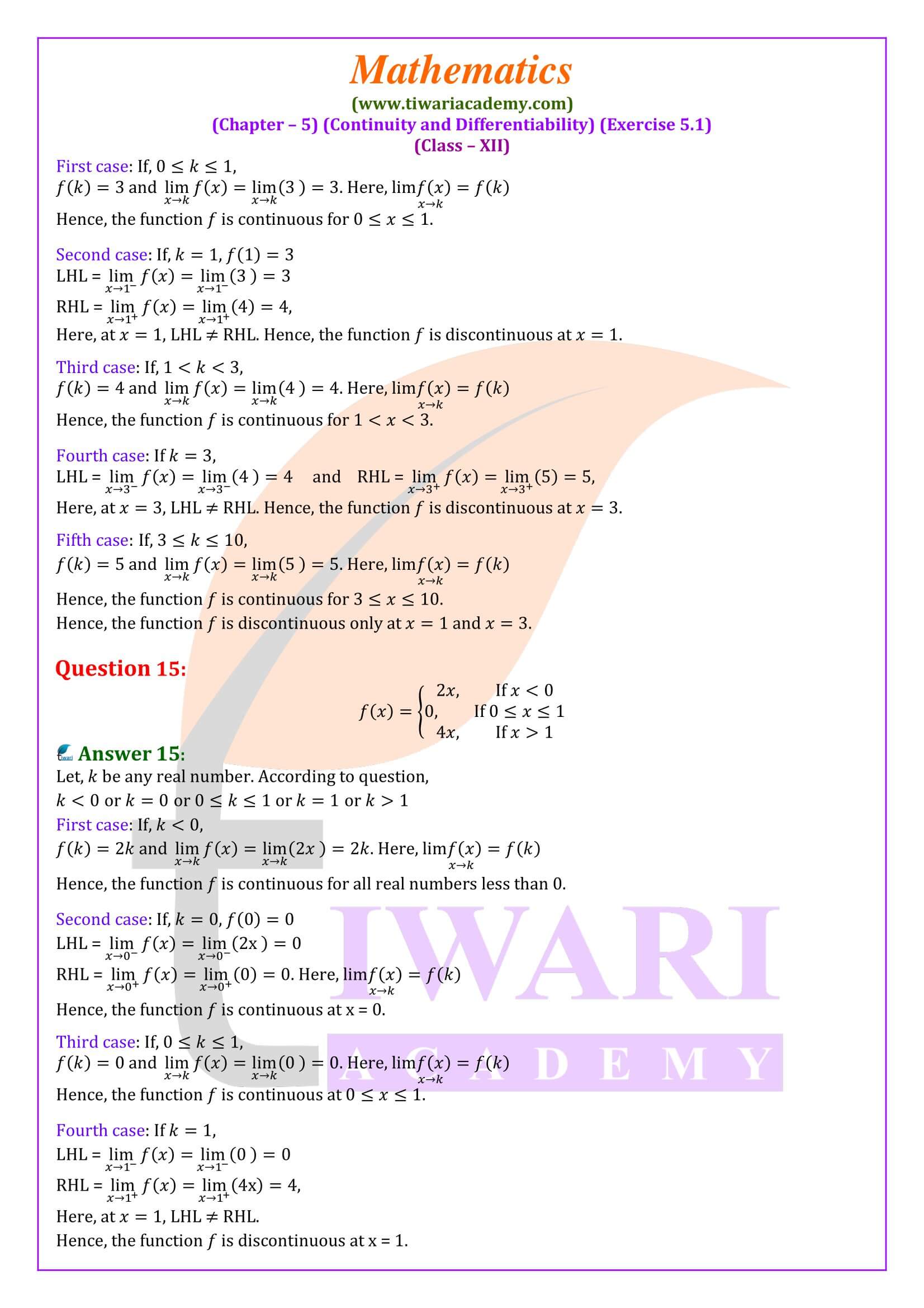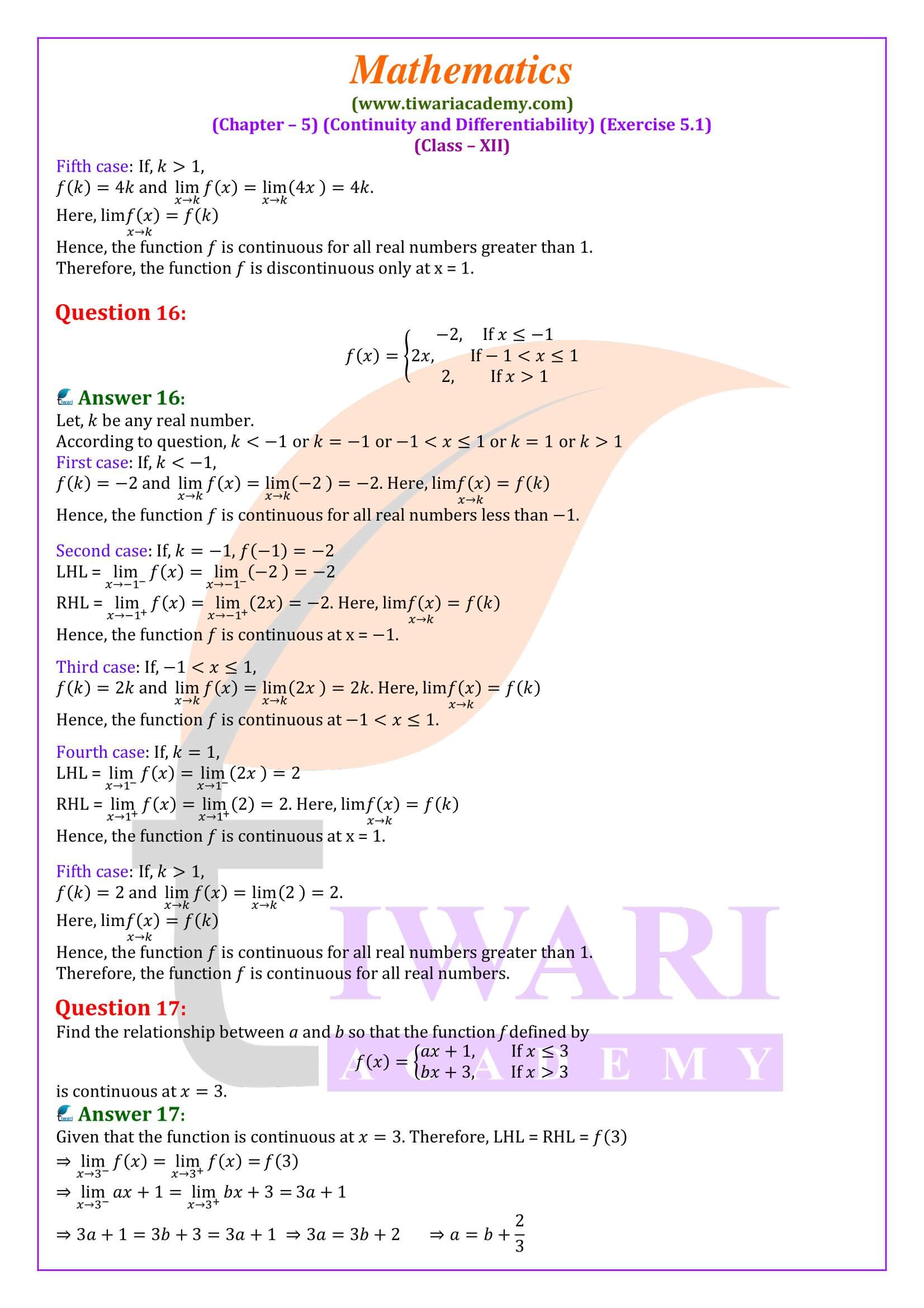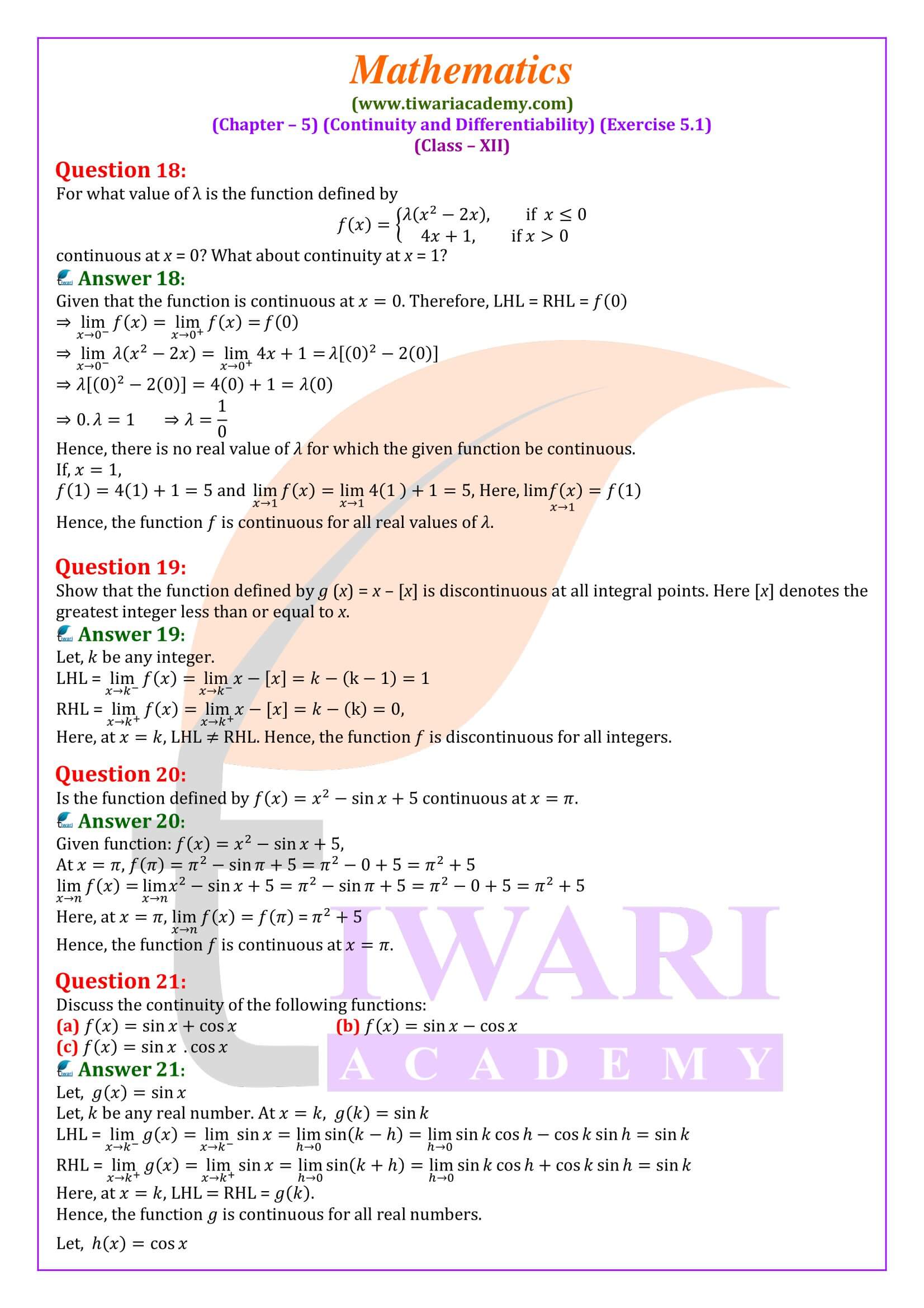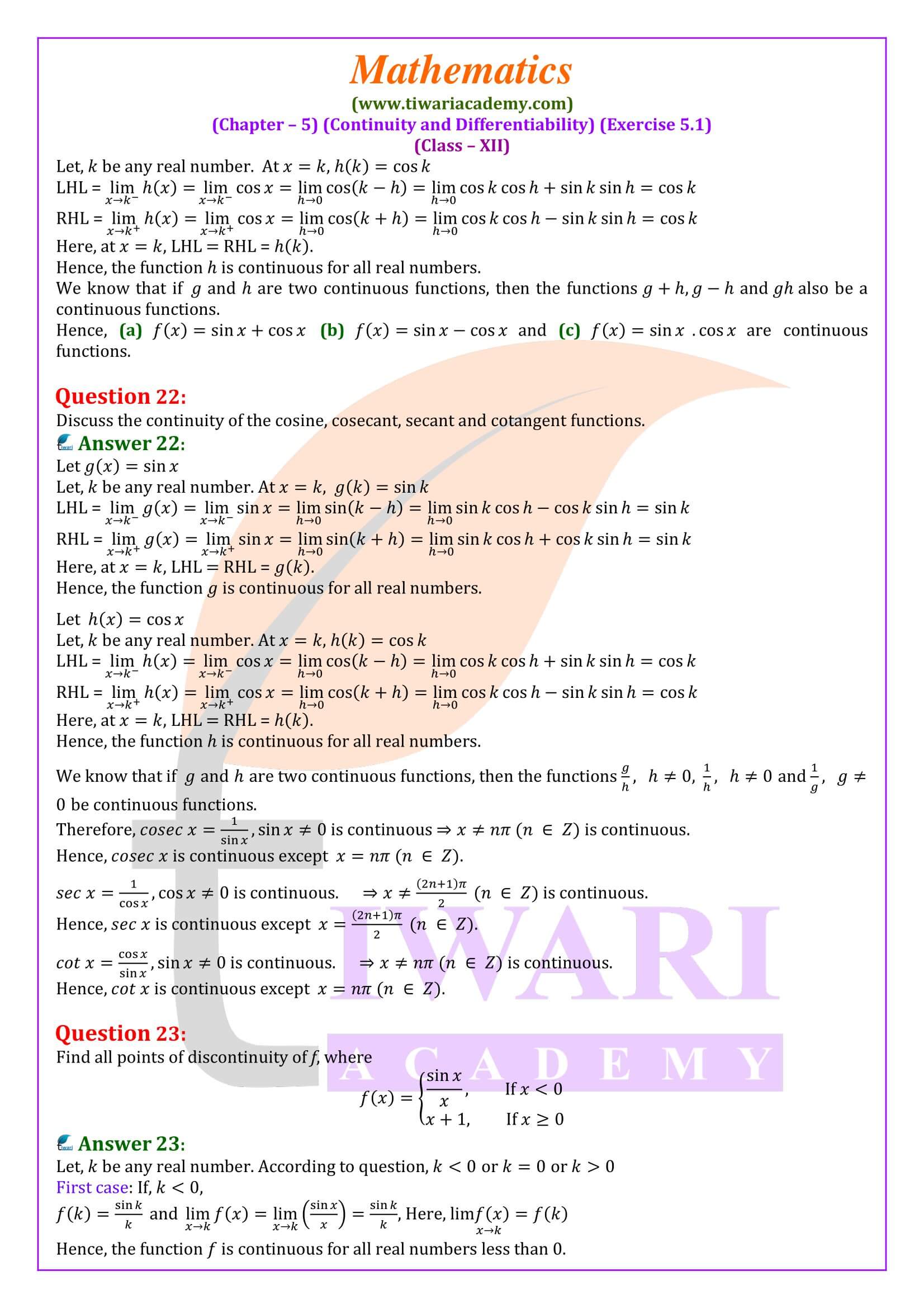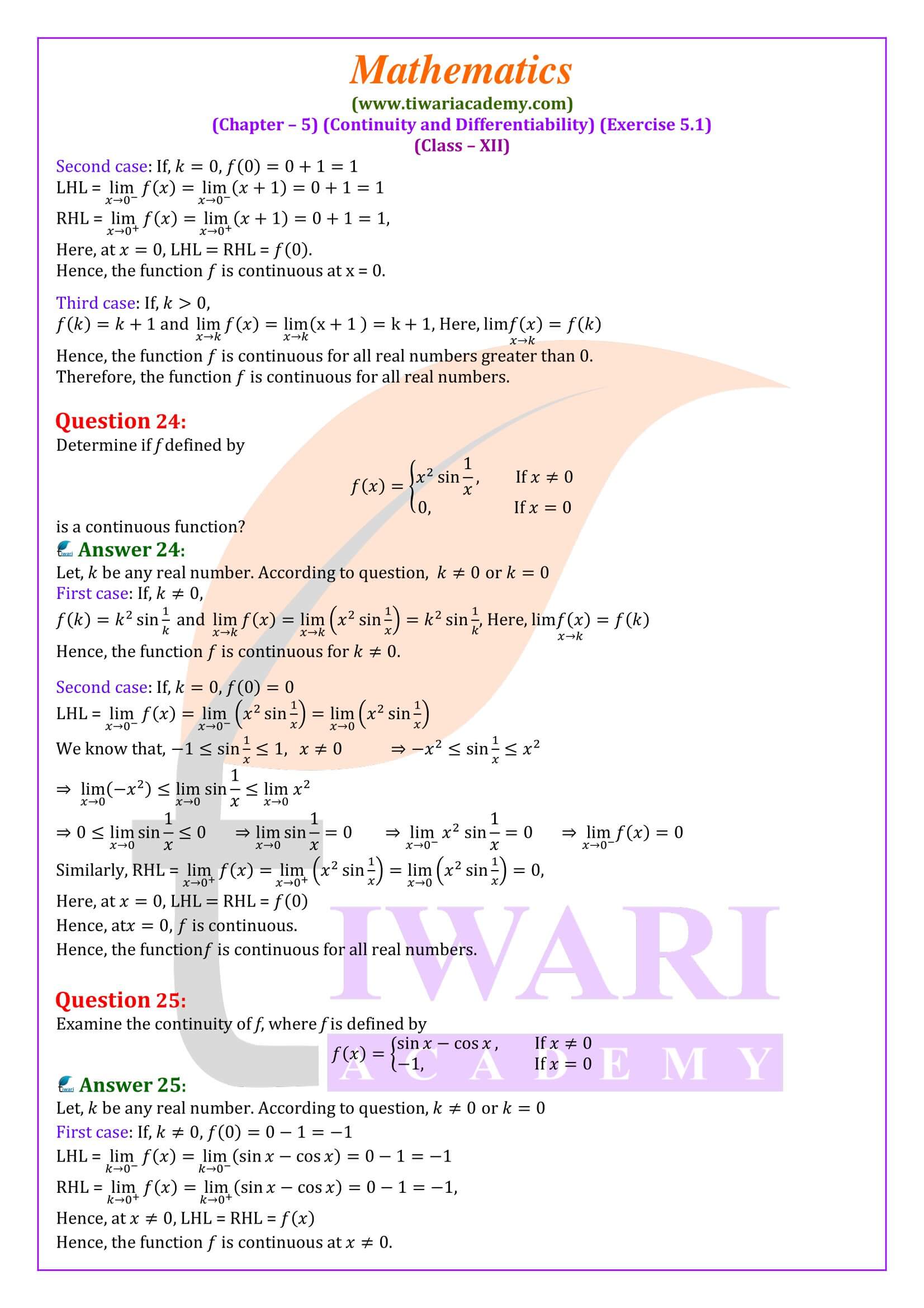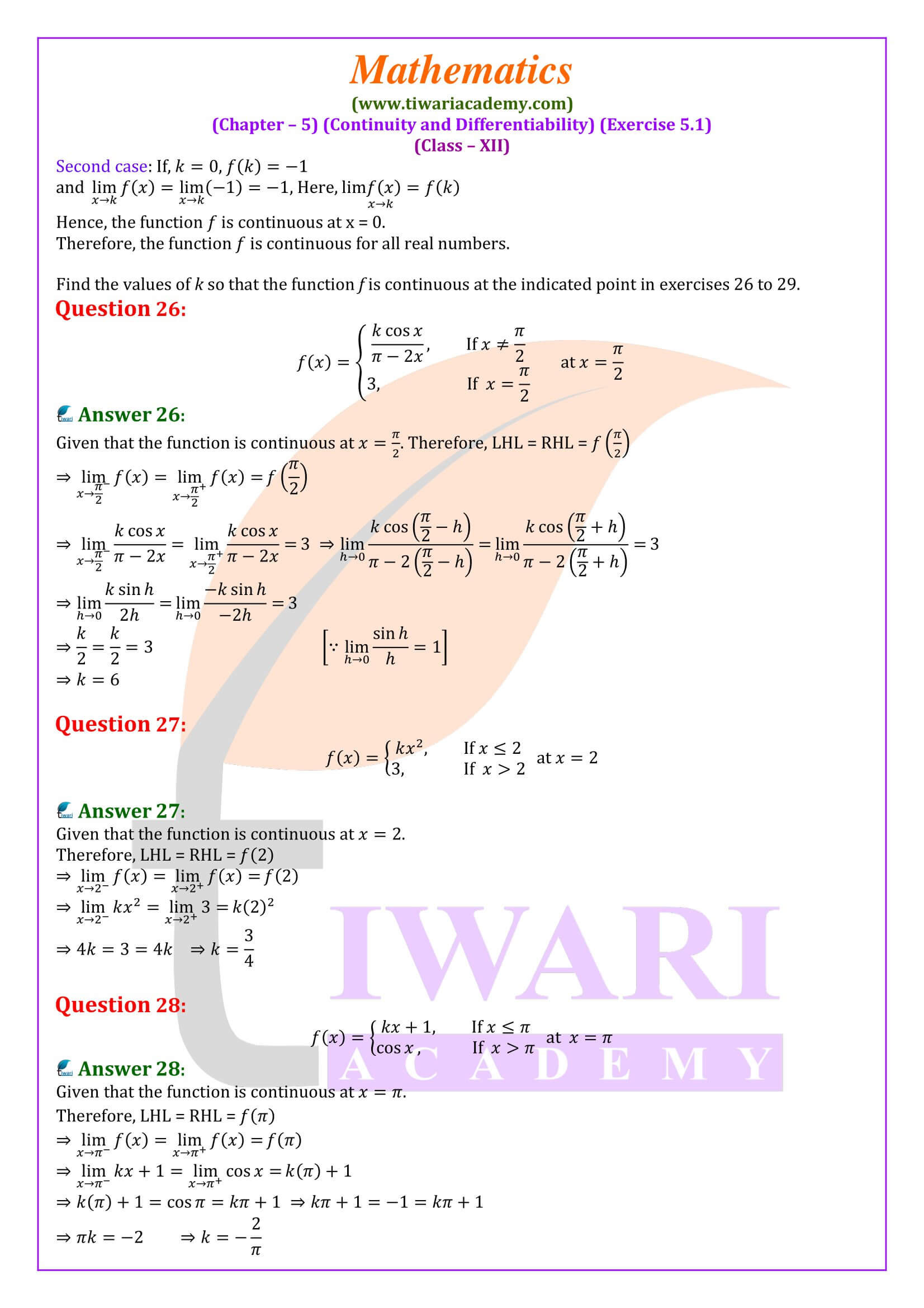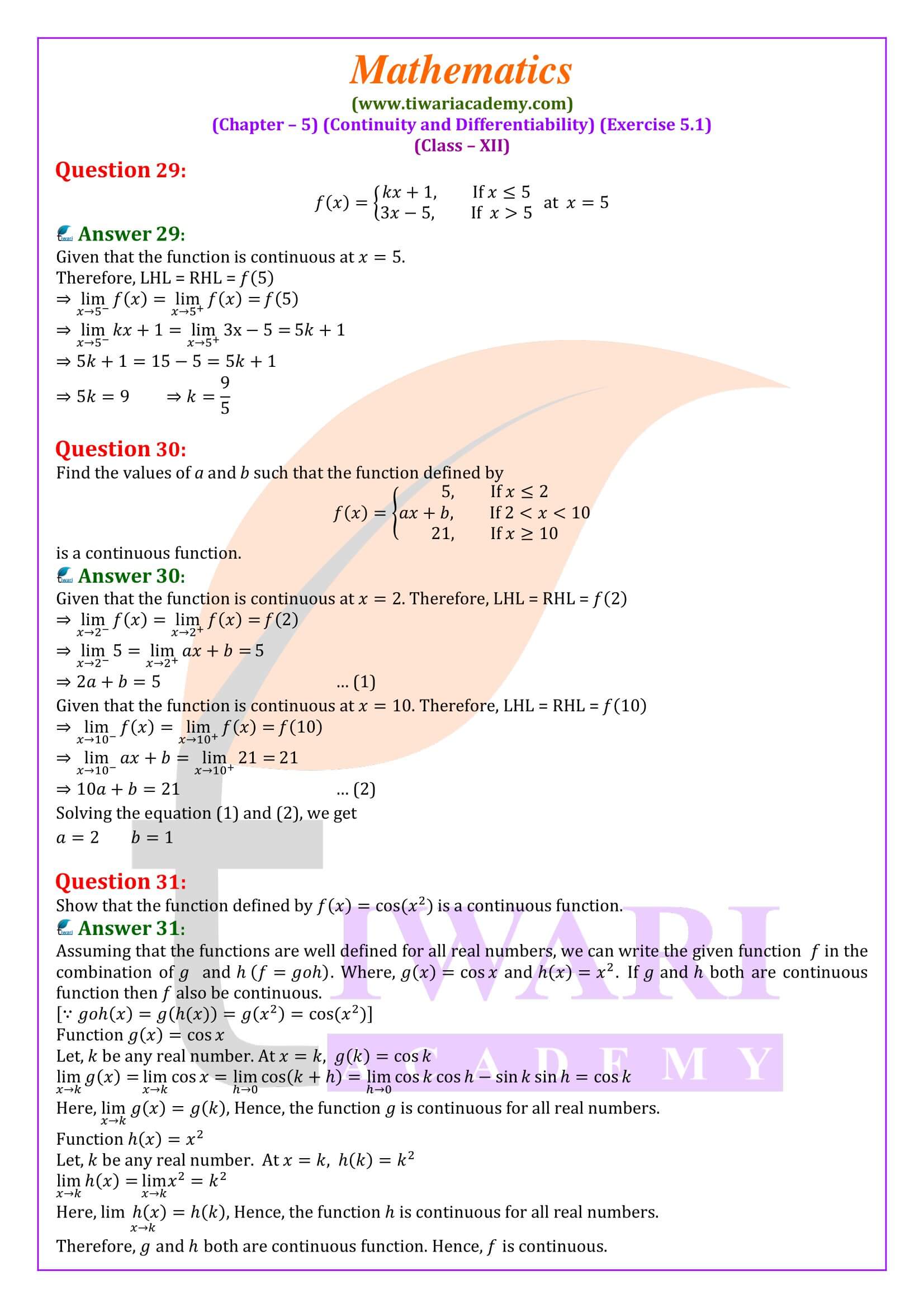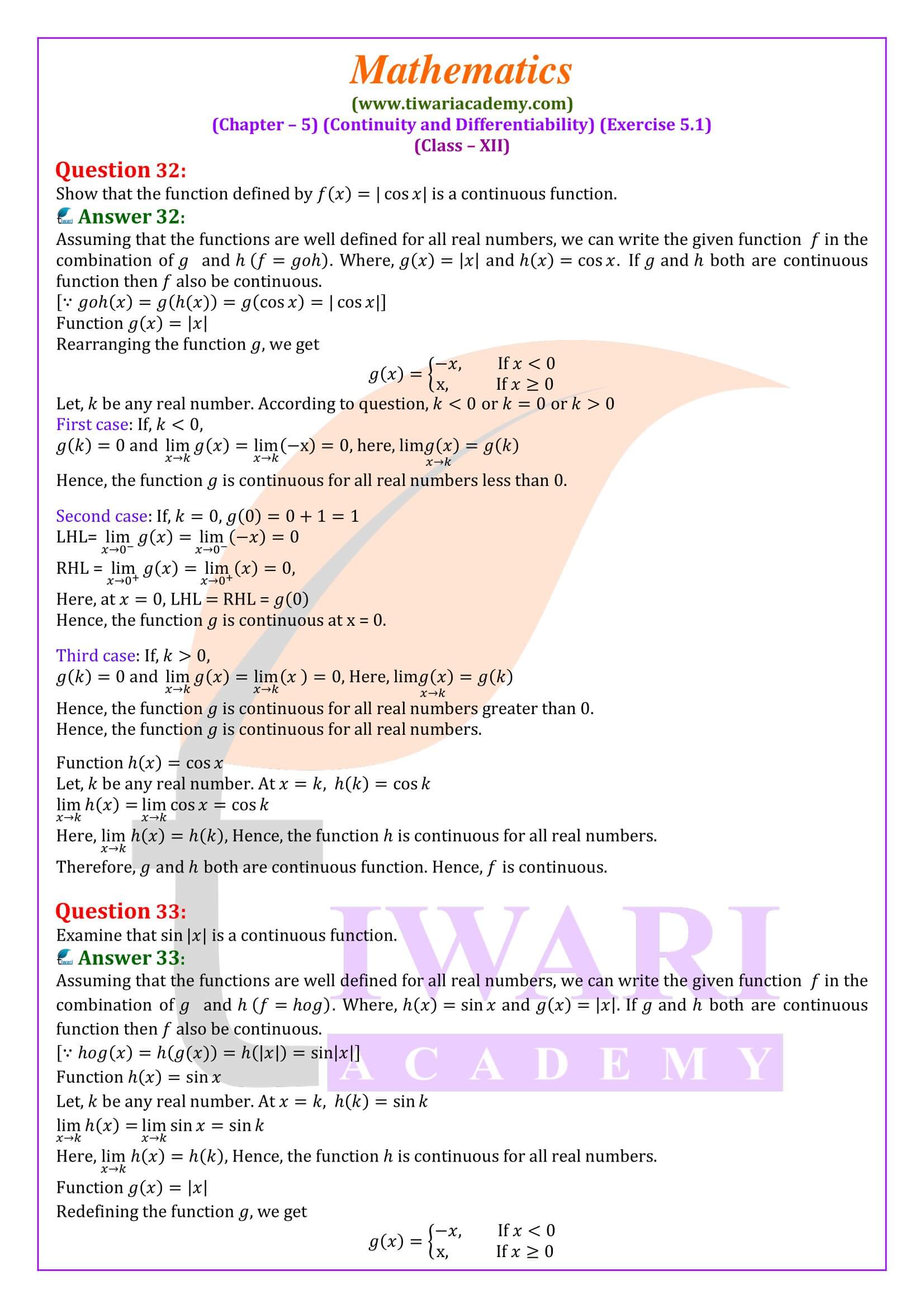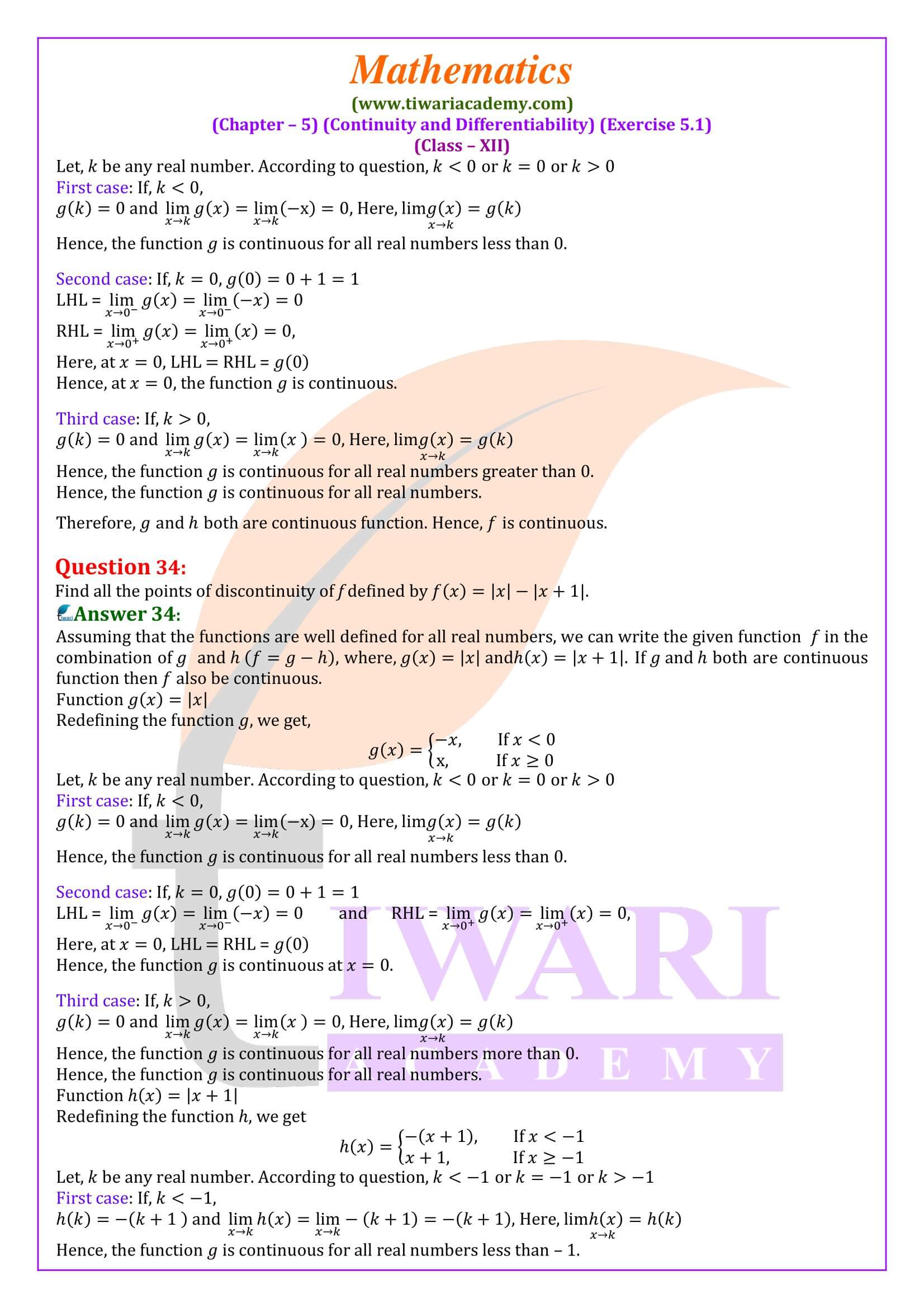NCERT Solutions for Class 12 Maths Chapter 5 Exercise 5.1 Continuity and Differentiability in Hindi and English Medium for CBSE 2025-26. Grade 12th Maths ex. 5.1 is updated as per new rationalised syllabus for session 2025-26.
Class 12 Maths Exercise 5.1 Solutions in Hindi and English Medium
NCERT Solutions for Class 12 Maths Chapter 5 Exercise 5.1
Grade XII Mathematics solutions are updated according to Latest CBSE Syllabus 2025-26. UP Board Intermediate students are also using NCERT Textbooks for their exam preparation, so download UP Board Solutions for Class 12 Maths Chapter 5 Exercise 5.1 in Hindi and English Medium. Videos related to all questions are also given below. These solutions are applicable not only for CBSE Board, but Uttarakhand Board (who are using NCERT), Bihar Board and MP, UP Board also. Ask your doubts through discussion forum and reply the questions asked by the other users. If you are facing any difficulty using Tiwari Academy website, please inform us. We will help you at our level best.
| Class: 12 | Mathematics |
| Chapter 5: | Exercise 5.1 |
| Topic Name: | Continuity and Differentiability |
| Content Type: | Text and Videos Format |
| Session: | CBSE 2025-26 |
| Medium: | English and Hindi Medium |
12th Maths Exercise 5.1 Solutions
NCERT Solutions for Class 12 Mathematics Chapter 5 Exercise 5.1 Continuity and Differentiability in English medium free to download or use online updated for new academic session 2025-26. In this chapter you will find the point of discontinuity of a function using left hand limit and right hand limits. UP Board students also can use these solutions as UP Board solutions for Class 12 Mathematics. Download NCERT Books apps for offline use.
Class 12 Maths Exercise 5.1 Question 1, 2, 3 in Video
Class 12 Maths Exercise 5.1 Question 4, 5, 6 in Video
Class 12 Maths Exercise 5.1 Question 7, 8, 9 in Video
Class 12 Maths Exercise 5.1 Question 10, 11, 12 in Video
Class 12 Maths Exercise 5.1 Question 13, 14 in Video
Class 12 Maths Exercise 5.1 Question 15, 16 in Video
Class 12 Maths Exercise 5.1 Question 17, 18, 19 in Video
Class 12 Maths Exercise 5.1 Question 20, 21 in Video
Class 12 Maths Exercise 5.1 Question 22, 23 in Video
Class 12 Maths Exercise 5.1 Question 24, 25 in Video
Class 12 Maths Exercise 5.1 Question 26, 27 in Video
Class 12 Maths Exercise 5.1 Question 28, 29, 30 in Video
Class 12 Maths Exercise 5.1 Question 31, 32 in Video
Class 12 Maths Exercise 5.1 Question 33, 34 in Video
Condition for Continuity of a Function
If the left hand limit (LHL), right hand limit (RHL) and the value of function at any point is same, the function is called a continuous function at that point. For the functions containing modulus function, it is better to redefine the function on the basis of the range of modulus and then check the continuity of the function. Polynomial function, sine, cosine functions are always continuous at all real values. If any function is already continuous, then we can find the unknown values (just like question number 26 to question 29), by using the relation LHL = RHL = f(x) at the point where the function is continuous.
Important Questions of 12th Maths Exercise 5.1
When a function is said to be continuous at a point?
A function is continuous at x = c if the function is defined at x = c and if the value of the function at x = c equals the limit of the function at x = c.
Check the continuity of the function f given by f (x) = 2x + 3 at x = 1
The LHL and RHL for the function at x = 1 are equal, therefore the function is continuous at x = 1.
When does a real function f is said to be continuous?
A real function f is said to be continuous if it is continuous at every point in the domain of f.
If two functions are continuous at a particular point, then what can you say about the sum and difference of functions?
Suppose f and g be two real functions continuous at a real number c. Then f + g is continuous at x = c and f – g also is continuous at x = c.
Feedback and Suggestions
We have updated NCERT solutions for new academic session based on latest NCERT Books 2025-26. If you have feedback regarding to NIOS Board or CBSE Board, please share through Discussion Forum. Your feedback and suggestions are important to us.
Which problems of exercise 5.1 of class 12th Maths are expected for the board exams?
Exercise 5.1 of class 12th Maths has 20 examples (examples 1 to 20) and 34 questions. All the problems of this exercise are important and can come in the board exam, but the most important problems of exercise 5.1 of class 12th Maths are examples 4, 5, 7, 9, 11, 14, 15, 16, 17, 18, 19, 20 and questions 3, 5, 7, 9, 15, 17, 18, 19, 22, 24, 26, 28, 30, 31, 32, 33, 34. 2 to 3 marks question can come from this exercise.
Can students do exercise 5.1 of class 12th Maths in 5 days only?
Students can do exercise 5.1 of class 12th Maths in 5 days or not depends on student’s working speed, efficiency, capability, and many other factors. But if they try to do exercise 5.1 of class 12th Maths in 5 days, they can easily do that.
Which is the core topic to study in exercise 5.1 of CBSE 12th Maths?
In exercise 5.1 of grade 12th Maths, students will study:
1. Continuity
a. Suppose f is a real function on a subset of the real numbers and let c be a point in the domain of f. Then f is continuous at c if
b. If f is not continuous at c, we say f is discontinuous at c and c is called a point of discontinuity of f.
c. A real function f is said to be continuous if it is continuous at every point in the domain of f.
2. Algebra of continuous functions
Theorem 1: Suppose f and g be two real functions continuous at a real number c. Then:
(1) f + g is continuous at x = c.
(2) f – g is continuous at x = c.
(3) fg is continuous at x = c.
(4) (f/g) is continuous at x = c, (provided g (c) ≠ 0).
Theorem 2: Suppose f and g are real valued functions such that
(f o g) is defined at c. If g is continuous at c and if f is continuous at g (c), then (f o g) is continuous at c.
Is exercise 5.1 of class 12th Maths easy to solve?
Exercise 5.1 of class 12th Maths is not easy and not tough. It lies in the mid of easy and tough because some examples and questions of this exercise are easy, and some are complex. However, the difficulty level varies from child to child. So, exercise 5.1 of class 12th Maths is easy, or tough depends on children also. Some children find it difficult, some find it easy, and some find it in the middle of easy and difficult.
